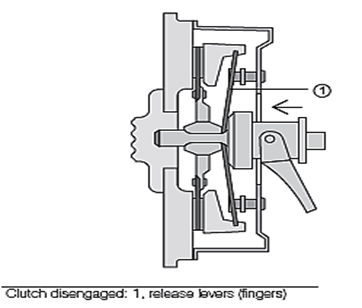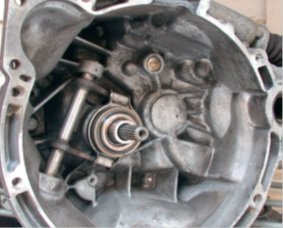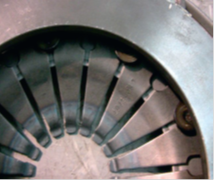Types Of Clutch
Introduction:
Earlier clutches, and some heavy-duty types, used coil springs instead of a Diaphragm. However, the diaphragm clutch has replaced the coil spring type.
Parts of clutch:

- The clutch is made of two main parts: a pressure plate and a driven plate.
- The driven plate, often termed the clutch disc, is fitted on the shaft, which takes the drive into the gearbox.
- When the clutch is engaged, the pressure plate, inside the cover, presses the driven plate against the engine flywheel.
- This allows drive to be passed to the gearbox.
- Pushing down the clutch pedal moves the pressure plate away, which frees the driven plate.
- The method of controlling the clutch is quite simple. The mechanism consists of either a cable or hydraulic system.
- The clutch shaft, or gearbox input shaft, projects from the front of the gearbox. Most shafts have a smaller section or spigot, which projects from its outer end.
- This rides in a spigot bearing in the engine crankshaft flange. The splined area of the shaft allows the clutch disc to move along the splines.
- When the clutch is engaged, the disc drives the gearbox input shaft through these splines. The clutch disc is a steel plate covered with frictional material. It fits between the flywheel face and the pressure plate.
- In the centre of the disc is the hub, which is splined to fi t over the splines of the input shaft. As the clutch is engaged, the disc is firmly squeezed between the flywheel and pressure plate.
- Power from the engine is transmitted by the hub to the gearbox input shaft.

- The width of the hub prevents the disc from rocking on the shaft as it moves along the shaft.
- The clutch disc has frictional material riveted or bonded on both sides.
- These frictional facings are either woven or moulded. Moulded facings are preferred because they can withstand high-pressure plate loading forces.
- Grooves are cut across the face of the friction facings to allow for smooth clutch action and increased cooling.
- The cuts also make a place for the facing dust to go as the clutch lining material wears.
The centre portion of the spring is slit into a number of fingers that act as release levers. When the clutch is disengaged, these fingers are depressed by the release bearing. The diaphragm spring pivots over a fulcrum ring. This makes its outer rim move away from the flywheel. The retracting springs pull the pressure plate away from the clutch disc, to disengage the clutch.
Gearbox input shaft around which is the release bearing and its operating lever
Earlier clutches, and some heavy-duty types, used coil springs instead of a Diaphragm. However, the diaphragm clutch has replaced the coil spring type because the diaphragm type has the following advantages:
● It is not affected by high speeds (coil springs can be thrown outwards) 
● The low pedal force makes for easy operation
● It is light and compact.
● The clamping force increases or at least remains constant as the friction lining on the plate wears.